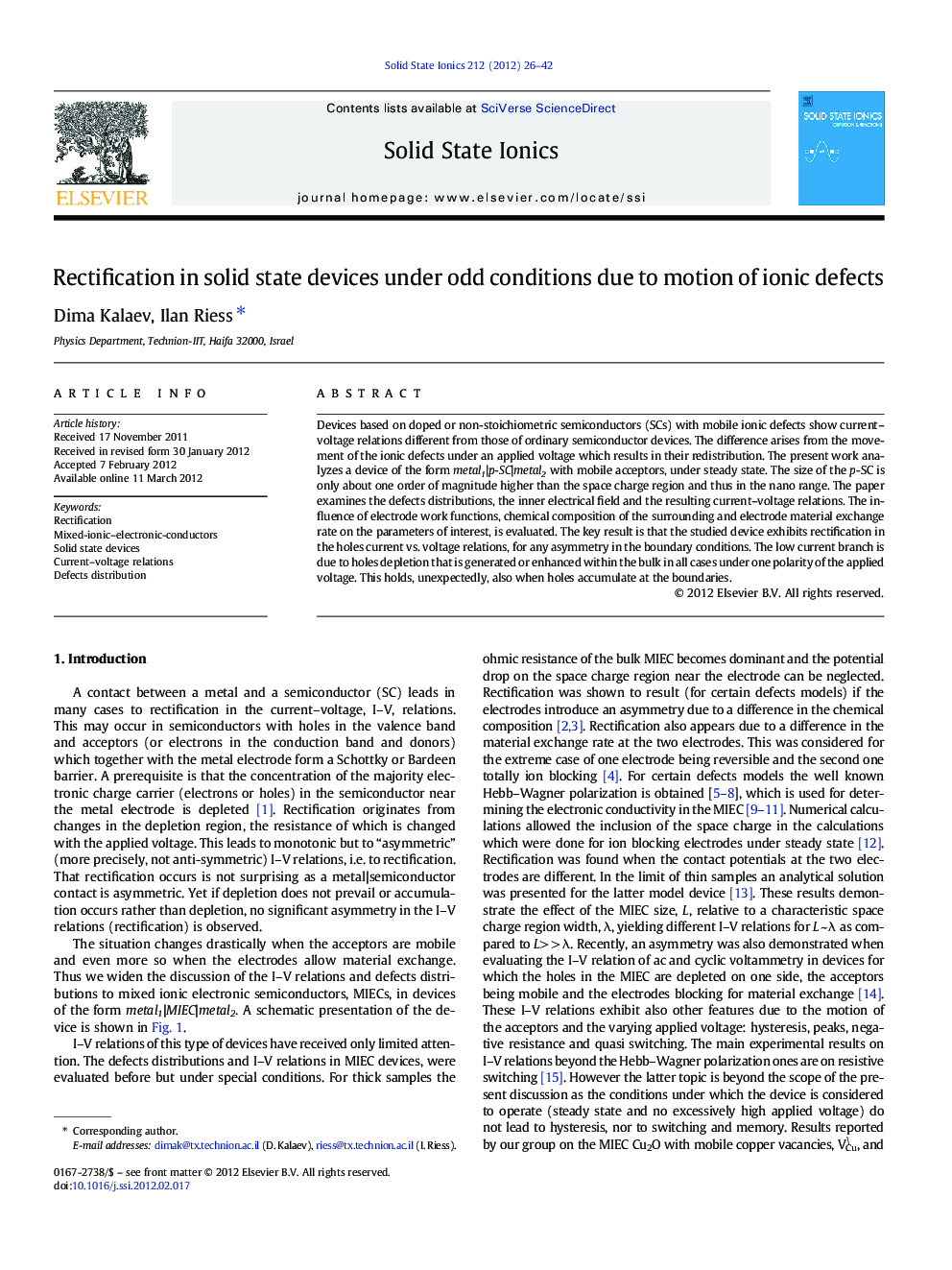| Article ID | Journal | Published Year | Pages | File Type |
|---|---|---|---|---|
| 1294462 | Solid State Ionics | 2012 | 17 Pages |
Devices based on doped or non-stoichiometric semiconductors (SCs) with mobile ionic defects show current–voltage relations different from those of ordinary semiconductor devices. The difference arises from the movement of the ionic defects under an applied voltage which results in their redistribution. The present work analyzes a device of the form metal1|p-SC|metal2 with mobile acceptors, under steady state. The size of the p-SC is only about one order of magnitude higher than the space charge region and thus in the nano range. The paper examines the defects distributions, the inner electrical field and the resulting current–voltage relations. The influence of electrode work functions, chemical composition of the surrounding and electrode material exchange rate on the parameters of interest, is evaluated. The key result is that the studied device exhibits rectification in the holes current vs. voltage relations, for any asymmetry in the boundary conditions. The low current branch is due to holes depletion that is generated or enhanced within the bulk in all cases under one polarity of the applied voltage. This holds, unexpectedly, also when holes accumulate at the boundaries.
► Rectification is shown theoretically to appear in metal1|MIEC|metal2 devices. ► Rectification occurs for four different reasons leading to an asymmetry. ► Symmetry is broken by different contacts. ► Difference is in contact potential, chemical composition or exchange rate. ► Depletion forms in the bulk even if holes/electrons accumulate at a contact.
